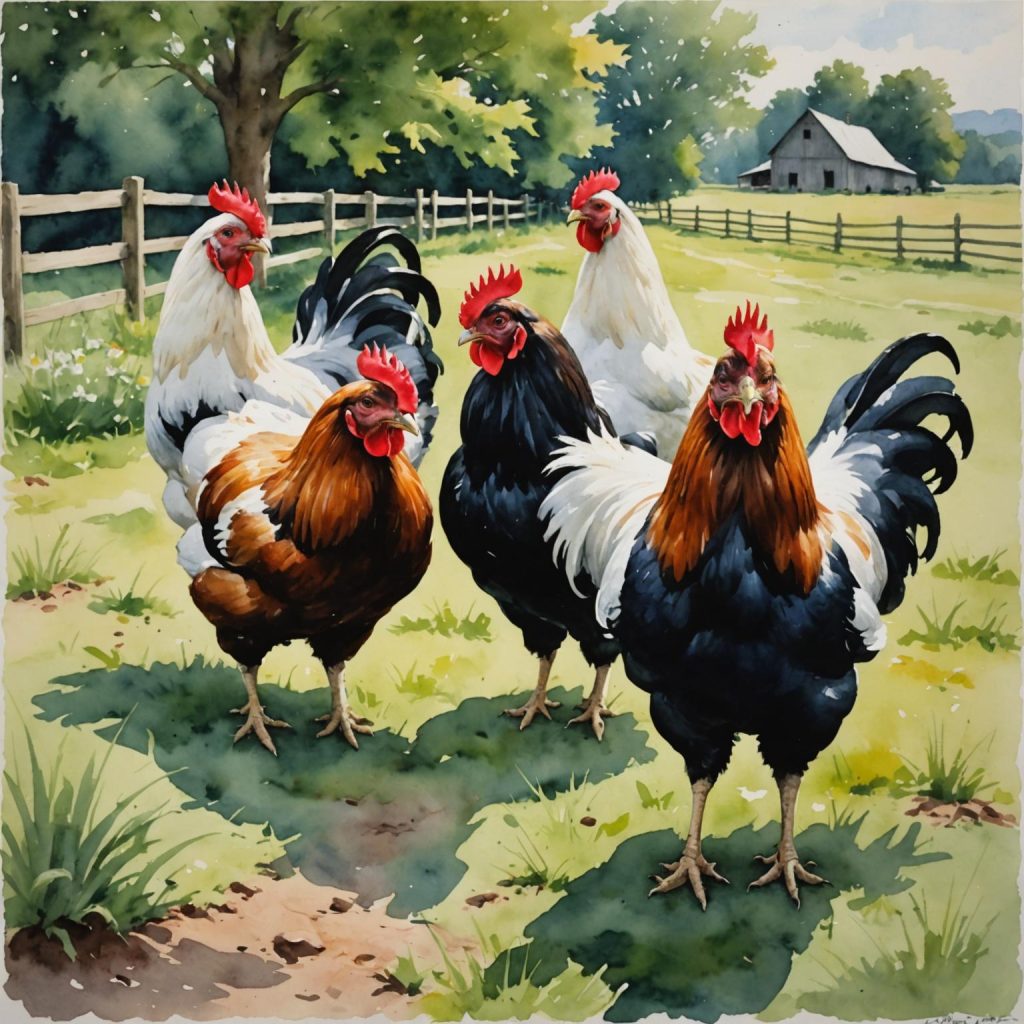When you first bring home a flock of fluffy, adorable chicks, it’s natural to want to keep them safe and sound in the confines of their cozy coop. But how long should you actually keep your new chickens confined before letting them spread their wings and explore the great outdoors? Let’s delve into the factors that play a role in determining the ideal timing for introducing your feathered friends to the wide world beyond their coop.
Table of Contents
- 1 Introductory considerations for introducing new chickens to the coop
- 2 Factors to consider when determining how long new chickens should stay in the coop
- 3 Signs that new chickens are ready to roam outside the coop
- 4 Tips for successfully integrating new chickens into the existing flock
- 5 Q&A
- 6 To Conclude
Introductory considerations for introducing new chickens to the coop
When introducing new chickens to your coop, it is importent to consider the dynamics of the existing flock and the needs of the newcomers.Allow the new chickens to adjust to their surroundings and get familiar with the coop before interacting with the existing members. This period of adjustment can help reduce stress and aggression between the birds.
it is recommended to keep the new chickens in a separate area within the coop for at least 1-2 weeks. This will give them time to establish their place in the pecking order and ensure they are healthy before being fully integrated with the rest of the flock. Keep an eye on their behavior and interactions during this time to gauge when they are ready to join the larger group. Slow and gradual introductions can definitely help prevent fights and establish a harmonious habitat for all the chickens.
Factors to consider when determining how long new chickens should stay in the coop
When bringing in new chickens to your coop, there are several important factors to consider before letting them roam freely with the rest of your flock. One key consideration is the age of the new chickens, as younger chicks may need more time to adjust to their new surroundings and bond with the existing members of the coop. Additionally, you should take into account the size of your coop and the number of chickens already in the space. Overcrowding can lead to stress and potential health issues for your flock,so it’s important to introduce new chickens gradually and monitor their behavior closely.
Another factor to consider is the health and wellness of the new chickens. If they have been recently vaccinated or treated for any illnesses,they may need to spend some time in quarantine before being introduced to the rest of the flock. Additionally, observing the pecking order dynamics within your existing flock can help you determine when it is safe to release the new chickens. By taking these factors into consideration and being patient with the integration process, you can ensure a smooth transition for your new feathered friends.
Signs that new chickens are ready to roam outside the coop
When your new chickens are ready to roam outside the coop, there are several signs to look out for. One of the first indicators is when they start to show curiosity about the outside world. You may notice them pecking at the coop door or eagerly watching as other chickens venture out.
Another sign that your new chickens are ready to explore is when they are fully feathered. Feathers are essential for regulating body temperature and protection from elements, so ensuring they have their full plumage before letting them outside is crucial. Additionally,if your chickens are actively seeking out perches or seeking higher ground within the coop,it may be a sign that they are ready for more space and freedom outside.
Tips for successfully integrating new chickens into the existing flock
When integrating new chickens into an existing flock, it is important to consider how long you should keep them in the coop before allowing them to free-range with the other chickens.One tip is to keep the new chickens in a separate coop or section of the coop for at least one week. This allows the existing flock to get used to the sight and smell of the new chickens without any direct contact.
During this time, you can also observe the new chickens for any signs of illness or aggression that could possibly harm the existing flock. Once the new chickens have been in a separate area for at least a week and are deemed healthy, you can then start to slowly introduce them to the existing flock under close supervision. This gradual introduction helps reduce the risk of fighting or pecking order conflicts among the chickens.
Q&A
Q: How long should I keep new chickens in the coop before letting them free-range?
A: It’s important to keep new chickens in the coop for at least a week to allow them to acclimate to their new surroundings and bond with their flockmates.
Q: Should I let my new chickens out to free-range right away?
A: While it may be tempting to let your new chickens out to free-range immediately, it’s best to wait until they are comfortable in their coop and familiar with their surroundings.Q: How can I tell when my new chickens are ready to be let out to free-range?
A: You can tell that your new chickens are ready to be let out to free-range when they are confidently exploring their coop, eating and drinking normally, and interacting positively with their flockmates.
Q: Can I gradually introduce my new chickens to free-ranging?
A: Yes, you can gradually introduce your new chickens to free-ranging by letting them out for short periods of time at first and gradually increasing the amount of time they spend outside.
Q: Are there any risks to letting new chickens free-range too soon?
A: letting new chickens free-range too soon can increase the risk of them getting lost, injured, or attacked by predators.It’s best to take your time and allow your chickens to acclimate to their new environment before letting them roam freely.
To Conclude
the decision of how long to keep new chickens in the coop ultimately depends on the individual birds and their level of comfort and integration. By carefully observing their behavior and gradually introducing them to the existing flock, you can ensure a smooth transition for your new feathered friends. Remember,patience and proper care are key in helping your chickens thrive in their new environment. Here’s to happy and healthy chickens in your coop!
Meet Walter, the feathered-friend fanatic of Florida! Nestled in the sunshine state, Walter struts through life with his feathered companions, clucking his way to happiness. With a coop that’s fancier than a five-star hotel, he’s the Don Juan of the chicken world. When he’s not teaching his hens to do the cha-cha, you’ll find him in a heated debate with his prized rooster, Sir Clucks-a-Lot. Walter’s poultry passion is no yolk; he’s the sunny-side-up guy you never knew you needed in your flock of friends!







